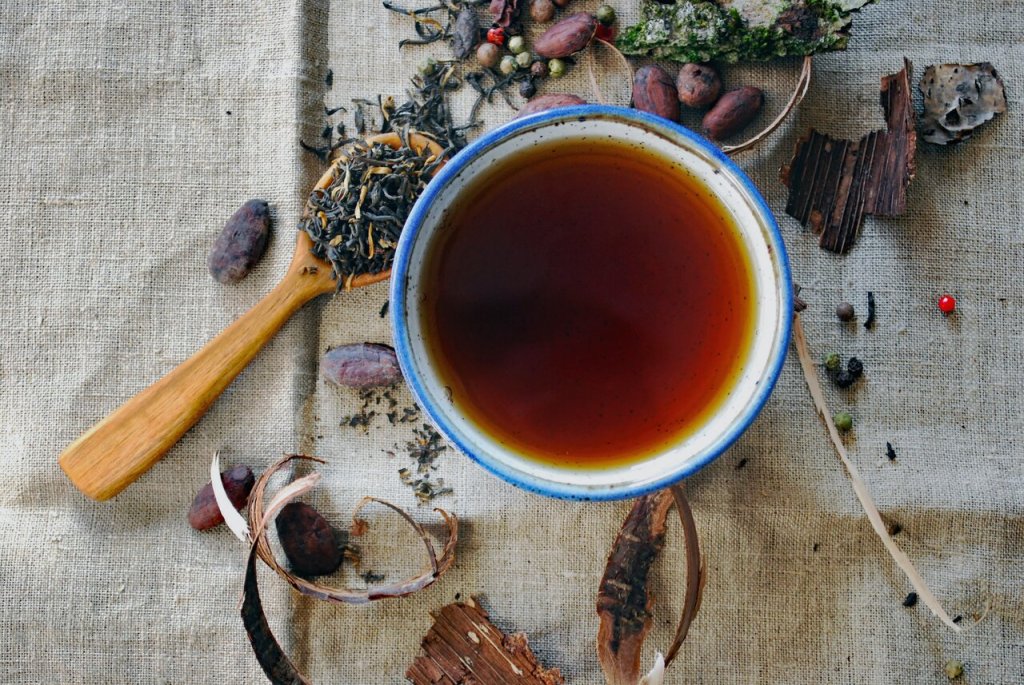5 Key Trends in Tea Consumption
Though often seeing parallel growth with coffee, tea brands are faced with their own unique trends. Often, health and wellness play a greater role in tea, as well as less focus on convenience. Tea consumers may be more discerning or willing to experiment than coffee consumers.
With that in mind, here are 5 key trends in Tea to keep an eye on:
1. Increased Popularity of Herbal Teas
For today’s consumers, there is a renewed focus on health, which is leading to the growing popularity of natural and organic products. Unsurprisingly, tea is a beneficiary of this shift, up 8.8% over last year. One of the biggest subcategories that aligns well with this shift is herbal teas, which have been growing in popularity in recent years. This looks to continue as more Americans focus on living healthier lifestyles.1
These teas are made from herbs and spices, and they offer a variety of health benefits. Some of the most popular herbal teas include chamomile tea, ginger tea, and green tea. Tea brands that offer these options and do a good job of marketing their health benefits and wellness attributes can better align with shifting consumer demand and make gains.
2. Growing Demand for Functional Teas
Another aspect of the renewed focus on health and wellness is that people are more aware than ever of the importance of eating a healthy diet and exercising regularly. With 47% of Americans having at least one of three risk factors that contribute to heart disease, it’s no surprise that functional teas are seeing gains from this shift.2
These are teas that are specifically designed to provide health benefits. Some of the most popular functional teas include turmeric tea and green tea. Tea brands offering a functional assortment can benefit from aligning their marketing efforts with health claims and exercise trends may be able to gain market share. Just make sure to stick to provable, science-backed claims.

Are you following CPG best practices?
In our free eBook, we share some of the key ways successful CPG brands are staying on top in a chaotic marketplace and ways that you can adopt their habits.
3. Rise of Matcha Tea
Another functional tea, but one that has taken off more than the others, is matcha tea. Matcha tea is a type of green tea that is made from ground-up tea leaves. It has a rich, creamy flavor and is packed with antioxidants. Matcha has become increasingly popular in recent years, and it is now a popular option at many coffee shops as well as for at-home consumption.
Matcha has also become increasingly popular on social media, where it is often associated with a healthy and holistic lifestyle. This has helped to boost its popularity among health-conscious consumers. Social media has become a top research hub for many shoppers, with 44.8% of global shoppers using social media apps and sites to research products they are interested in buying.3 This means matcha tea brands can not only see gains through marketing on the platforms but selling on them as well.
4. Growing Interest in Loose-leaf Tea
Another growing trend is the return of loose-leaf tea. That is, tea that is sold in loose form, rather than in bags. Loose-leaf tea has been growing in popularity in recent years, as consumers have become more interested in high-quality tea. It is typically higher quality than bagged tea, and may offer a more flavorful cup of tea.
However, inflation is still causing stress for consumers. This means consumer behavior is evolving, with an increasing preference for private label products, value-based retailers, and promotions. In fact, value retailers are now capturing 42.4% of CPG sales.4 The key to positioning loose-leaf options as higher quality and higher value lies in tea brands’ ability to present their products as an affordable luxury.
5. Increased Focus on Sustainability
Going hand-in-hand with a focus on wellness is consumers’ growing desire for sustainable products. In fact, 92% of consumers say that sustainability is important when choosing a brand today.5 However, the tea industry is facing a number of sustainability challenges, such as water scarcity and deforestation. As a result, there is a growing focus on sustainability in the tea industry.
Some of the ways that tea companies are working to be more sustainable include using recycled packaging, sourcing tea from sustainable farms, and reducing their water usage. Putting in the effort to become more sustainable now can pay dividends in the long run. You can avoid facing regulatory issues and use these efforts for key messaging in your product attributes to drive sales.
How to Adapt to Changing Tea Trends
The tea market is constantly changing, and CPG brands need to adapt to these changes in order to remain relevant and successful. And with today’s tea market being worth $8.7 Billion, there’s a lot on the line.1 This means understanding how consumers are shifting their focus regarding health and wellness, sustainability, and inflation are key. By following these trends, CPG brands can ensure that their tea products remain relevant and appealing to consumers in the years to come.
In addition to these trends, CPG brands should also be flexible, creative, and responsive to customer feedback. They also need to rely on data to make more informed decisions and be strategic in their planning. By being willing to adapt to change and meet the needs of their customers, CPG brands can stay ahead of the curve and continue to succeed in the tea market.

“Leaf” Slow Growth behind with NIQ
The tea market is going through some big changes, but if you don’t have the right data and insights, you’re likely to fall behind. NIQ offers a range of solutions and expert insights to support brands of all sizes.
Emerging brands can start their journey with a free Byzzer™ subscription, NIQ’s platform built for emerging brands and their budgets. Free access gets you 3 free reports and a weekly alert to get you started with data. Byzzer™ provides breakdowns of a wide range of attributes and markets in easy-to-digest reports.
Best of all, we’ll show you how to leverage this information for your action plan. It’s never too early to start acting on data.
Interested in more valuable insights like these?
Sources:
1 NIQ Omnisales Latest 52 Weeks Period Ending July 1, 2023
2 Virani SS, Alonso A, Aparicio HJ, Benjamin EJ, Bittencourt MS, Callaway CW, et al. Heart disease and stroke statistics—2021 update: a report from the American Heart Association. Circulation. 2021;143:e254–e743.
3 NIQ Brandbank
4 NIQ Total U.S. xAOC, 4 Weeks Ending July 29, 2023
5 NIQ Sustainability Report




